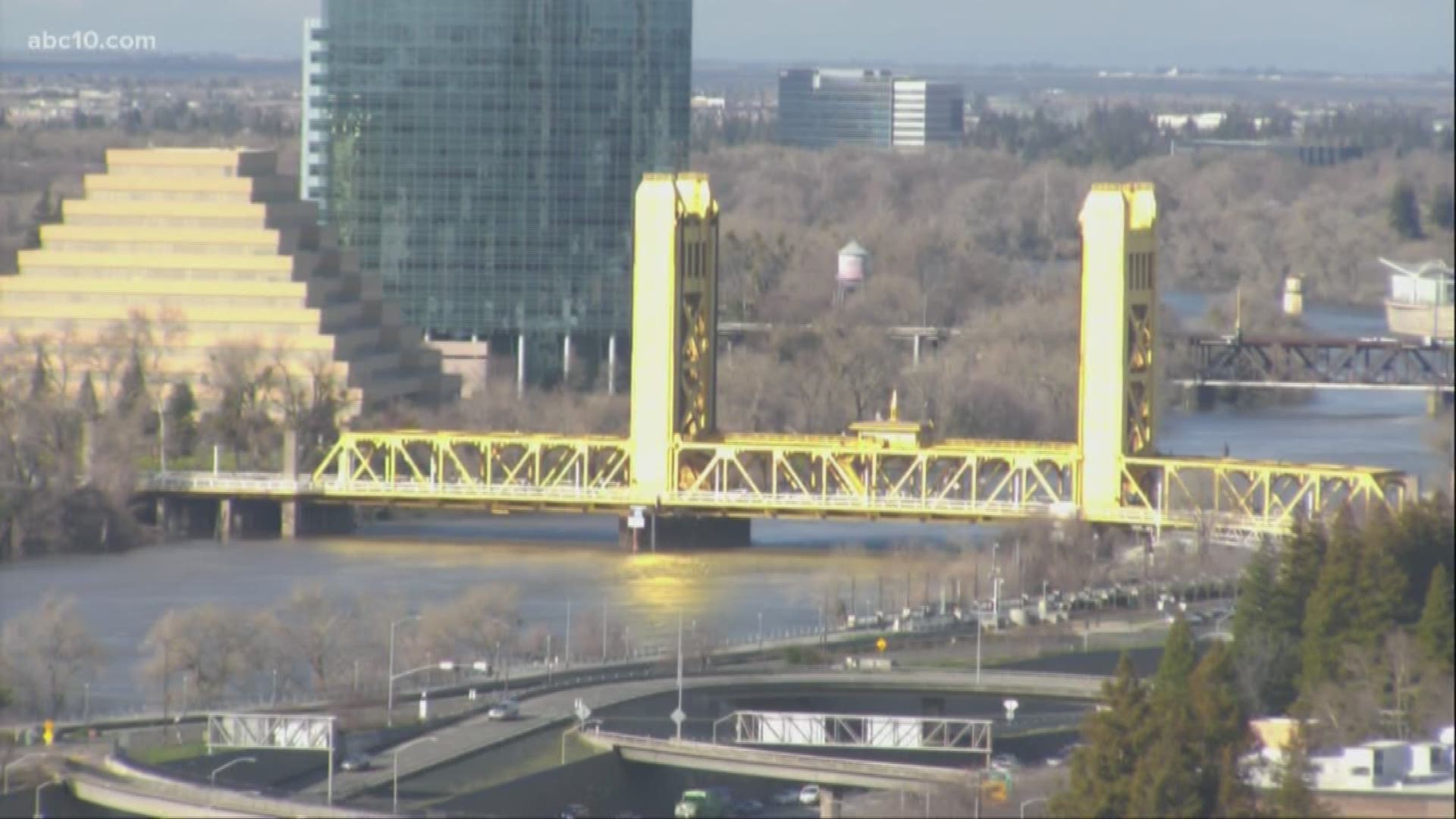If you are viewing on the ABC10 app, tap here for multimedia.
The Yolo Causeway, an elevated highway that stretches from Davis to Sacramento, is a fixture in the Sacramento Valley that people often overlook. Is this piece of highway really just a way to get from point A to point B?
The causeway crosses the Yolo Basin, a massive wildlife area where a number of plants and animals thrive in the nurturing environment.
The Yolo Causeway has one extremely important job: Keeping traffic moving during winter floods, as gallons upon gallons of water from the Sacramento River reach the Yolo Basin.
With the flood season fast approaching, here are some fast facts about the Yolo Causeway that you probably didn't know:
What: The Yolo Causeway.
When: Built in 1914, updated to its current structure in 1962.
Where: Crossing the Yolo Bypass, a massive wildlife area connecting Sacramento and Davis.
What it does: Allows vehicular and bicycle travel between Davis and Sacramento above floodplains, aids in the annual flooding of the Yolo Bypass Wildlife Area.
By the numbers:
3.2 miles of elevated highway make up the length of the Yolo Causeway.
About 3.9 million gallons of water can flow through the wildlife area, underneath the causeway, without excessive flooding.
Approximately 250,000 Mexican free-tailed bats roost in the joints of the Causeway in the summer. This place is perfect for these creatures: They hang high off the ground, out of reach of predators, and feast on the bountiful local insects.
1994: The year that the Yolo Causeway was renamed the “Blecher-Freeman Memorial Causeway.” The name honors two California Highway Patrol officers who were killed in 1978 while on duty in the area.
66 times and counting, UC Davis and Sacramento State have met to play The Causeway Classic, an annual college football game named after the iconic portion of the highway that connects the two cities. The winner gets a trophy made of concrete taken from the causeway. The winner's title currently belongs to UC Davis.
16,600 acres of land make up the Vic Fazio Yolo Wildlife Area, which lies underneath the causeway. This rich area is the largest ecological restoration project West of the Florida Everglades. `
4: The number of days a celebration lasted to officially dedicate the Yolo Causeway in 1916. Four days! The festivities included a “wedding” between Miss West Side, Bernice Worley of Yolo County, and Mr. East Side, John Murray of Sacramento County, to represent the union of the East and West sides of the Sacramento Valley.
$396,000 were spent to construct the Yolo Causeway in 1962. This amount, adjusted for inflation, equals roughly $9,860,960, today.
2026 to 2030 is the estimated timeline given by Caltrans for when the Yolo Causeway will once again be under construction, this time to ease traffic congestion.
30 miles were subtracted from the long trip between Sacramento to San Francisco when construction of this single highway project was completed.
If you're viewing on the ABC10 App, tap here for multimedia.
________________________________________________________________
WATCH MORE:
Rising river levels in Sacramento explained
Alan Haynes, a hydrologist with the California Nevada River Forecast Center, talks with ABC10's Carlos Herrera about river levels after days of rain in Northern California. Haynes also tells us what to watch out for.

